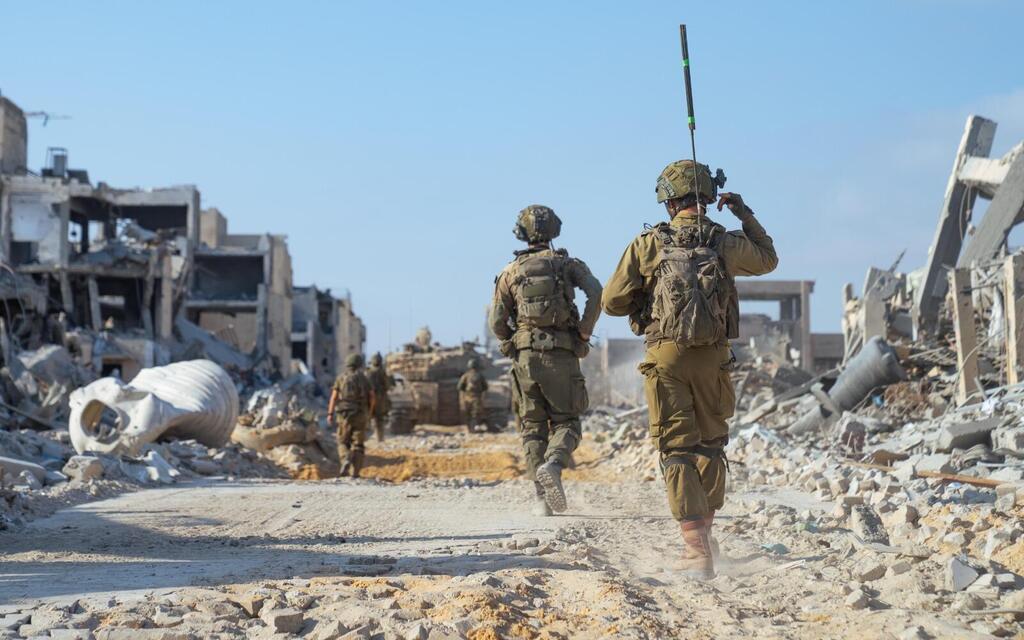Israel’s Security Cabinet has approved Prime Minister Benjamin Netanyahu’s plan for a “takeover” of Gaza City, framing the move as the only viable route to dismantling Hamas and securing the release of Israeli hostages. While officials avoided the term “occupation” because of its legal implications, the plan marks the most ambitious escalation since ground forces first entered the enclave in late 2023. Israeli sources shared with the Levant Files the details of the plan.
The Five Principles
According to a statement from the Prime Minister’s Office, the Cabinet endorsed five strategic principles that must be met before the war can be declared over:
1. Total disarmament of Hamas.
2. Return of every Israeli hostage—living or deceased.
3. Full demilitarization of the Gaza Strip.
4. Ongoing Israeli security control inside Gaza.
5. Installation of a civilian administration not run by Hamas or the Palestinian Authority.
Officials said an “absolute majority” of ministers concluded that any alternative plan would fall short of crushing Hamas or retrieving the hostages.
The operation—expected to last at least six months—will start by encircling Gaza City and relocating roughly one million residents southward. Commercial satellite imagery reviewed by U.S. officials and first reported by NBC News shows Israeli Defense Forces (IDF) armor and artillery already massing near the border, indicating what one American analyst called “an imminent major ground operation.”
IDF Chief of Staff Lt. Gen. Eyal Zamir briefed senior commanders Friday, emphasizing a “safety-over-speed” doctrine: hostage lives trump rapid territorial gains. Urban districts containing confirmed hostage “polygons” would be bypassed or assaulted only after precision strikes and special-forces sweeps. Reserve call-ups are likely, but Zamir aims to delay them until after the Jewish high-holiday season to ease family strains and training bottlenecks.
Netanyahu has privately set 7 October—the second anniversary of Hamas’s 2023 massacre— as the deadline for civilian evacuation, a date some officers fear is politically motivated. Still, military planners say phasing the assault could create windows for diplomacy while maintaining battlefield pressure.
Cabinet Fault-Lines: Victory Versus Bargain
Accordıng to the Israeli media, the 10-hour overnight meeting exposed deep rifts inside the right-wing government.
• Finance Minister Bezalel Smotrich voted no, arguing that anything short of conquering the entire Strip is “a limited and dangerous operation aimed solely at herding Hamas back to the negotiating table.”
• National Security Minister Itamar Ben-Gvir supported the takeover itself but blasted humanitarian corridors and post-war plans for a non-Hamas governing body, claiming such ideas “do not encourage emigration from Gaza.”
• Justice Minister Gideon Sa’ar and Minister of National Missions Ze’ev Elkin abstained, warning that “treating Gaza like the West Bank with routine raids is not a war” and could end in defeat.
During deliberations, Gen. Zamir candidly told ministers that he “recommends removing the return of the hostages from the IDF’s operational objectives,” given the complexity of urban warfare. Ben-Gvir shot back: “We worry about the hostages, but also about the soldiers who demand victory. You are subordinate to the political echelon.”
Outside the prime minister’s office, hundreds—led by relatives of the Israelis still held in Gaza—protested the Cabinet vote, chanting “First bring them home!” Organizers accuse Netanyahu of gambling with their loved ones’ lives to preserve his fragile coalition.
U.S. Reaction
U.S. Vice President J.D. Vance acknowledged “some disagreement” with Israel’s tactics but said Washington shares Jerusalem’s objectives: eliminating Hamas and alleviating Gaza’s humanitarian crisis. The Trump administration, he added, will not recognize a Palestinian state “given the lack of a functional government there,” diverging from the U.K.’s stated intent.
A senior U.S. official told The Jerusalem Post that “Israel is to decide what it needs for its security,” signaling continued, if cautious, American backing.
Meanwhile, a Hamas spokesperson told Al Jazeera Mubasher that any post-war governing body backed by Israel would be treated as “an occupying force,” promising fierce resistance.
What Happens Next?
IDF divisions from Southern Command are slated to open new corridors around Gaza City over the coming weeks, mirroring tactics used in Shijaiyah and Zeitoun earlier this year. Analysts expect a slow, phased campaign punctuated by pauses for negotiations, hostage talks, and international pressure. Such pacing, critics warn, could allow Hamas to regroup, while supporters argue it preserves Israeli soldiers’ lives and diplomatic capital.
Inside the Cabinet, the debate is far from settled. Ministers aligned with Smotrich and Ben-Gvir are already demanding a broader conquest of the Strip, while centrists push for a more straightforward exit strategy. For now, Netanyahu is betting that a limited yet prolonged grip on Gaza City can accomplish two seemingly conflicting goals: blunting Hamas’s military capacity and reviving stalled hostage talks.
Whether that gamble yields decisive victory or more bottomless quagmire will become evident—slowly—street by street in Gaza City’s dense warrens, under the watchful eyes of a region and a world unwilling to look away.
Correction: A previous version of this story wrongly stated that 119 Israelis were still captive. The error has been corrected. We regret the inaccuracy and apologize to our readers.
Photo: Ynet
